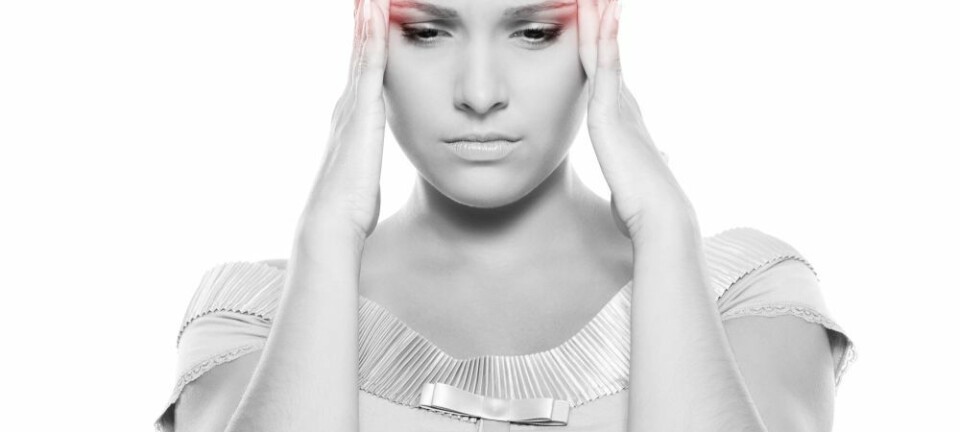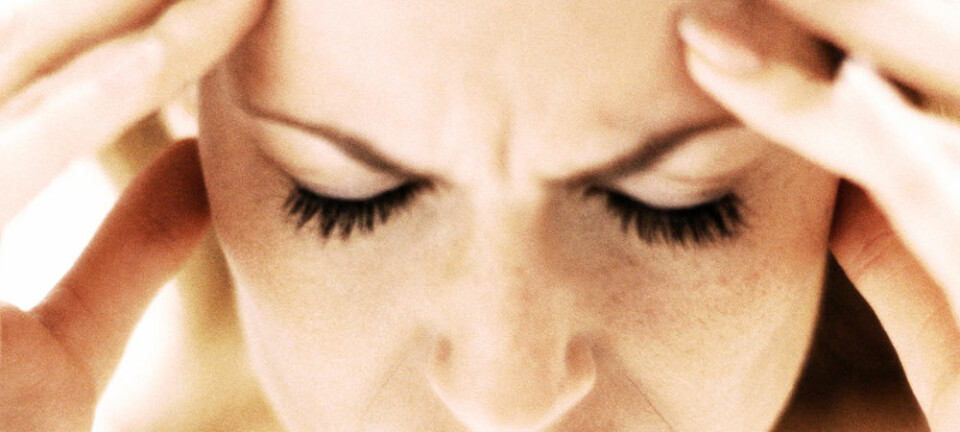
Migraines eased by chiropractic? Probably the placebo effect
A visit to the chiropractor might help your migraine. But other treatments work equally well, a new Norwegian study shows.
Roughly one in seven people worldwide suffer the agony of migraine headaches. These debilitating attacks can last for up to three days, and can cause intense pain, nausea and an extreme sensitivity to light and sound. In Norway, an estimated 750,000 people get migraines.
Fortunately, painkillers can help. Sometimes, common painkillers like paracetamol or ibuprofen are enough, while people who need more powerful drugs may find relief from a type of medicine called triptans.
But not everybody can use these drugs. Some people get no relief from these medicines, or may experience unacceptable side effects. In the worst case, a person who takes painkillers or triptans too often can end up with a drug-induced headache that makes things even worse.
For these people, chiropractic medicine may offer relief. Or does it?
Important to consider placebo effect

Chiropractors do treat migraines, and some studies show that chiropractic manipulation does have a positive effect. But the results have been uncertain, mainly because of the placebo effect — the fact that many people may feel better just because they believe a treatment works.
"The placebo effect is very high for all types of migraine treatments,” says chiropractor and physiotherapist Aleksander Chaibi at the Atlas Clinic, who took his PhD in 2016 at the Head and Neck Research Group at the University of Oslo’s Akershus University Hospital on migraines.
The placebo effect can be so strong that researchers who study the effectiveness of different treatments, from pills to acupuncture, need to factor it into their studies, Chaibi and others say.
This means researchers should compare patients who receive the treatment under investigation with patients who are given a fake treatment. If a study is designed this way, researchers should be able to detect if the treatment they are testing has an effect beyond the placebo effect.
This poses a difficult problem, however. When the real treatment consists of kneading and manipulating an individual’s body, how do you devise a control treatment that can test for the placebo effect that can also convince subjects that they are being treated?
A placebo treatment for studies
In 2015, Chaibi created a specific chiropractic placebo treatment that was able to fool the vast majority of patients.
He and his colleagues are now using this treatment to learn more about how chiropractic manipulation works on migraines.
In a recent effort, Chaibi and his colleagues studied 104 patients who averaged seven migraine days a month. The participants were divided into three groups. One received a real manipulation treatment —12 times over three months. The second group received a placebo treatment, and the third group was not given any chiropractic treatment at all.
All participants were allowed to continue to use their usual medications while the study was ongoing. But they were not allowed to make any changes in their preventive migraine drugs.
The researchers checked in on their patients treated right after their last treatment, and again after three, six and 12 months.
Clearly better a year after
The results showed that the group who received manipulation treatment experienced about 40 percent reduction in their migraines, says Chaibi.
They had fewer days of migraine, shorter attacks and a little less intense pain. The follow-up also showed that the effect lasted up to a year after the last treatment.
The same thing happened, however, in the group who received the fake treatment. The results here were as good as in the patients who received real chiropractic manipulation.
However, participants who did not receive treatment did not experience any corresponding improvement.
For this reason, Chaibi and his colleagues concluded that the effect in the first two groups was probably a placebo response. These findings were published late last year in a research article in the European Journal of Neurology.
Disappointing but important
"Clearly, the results were disappointing, but in research, you have to be objective and accept the findings you get," Chaibi says.
Lars Jacob Stovner is a professor at the Norwegian University of Science and Technology, and head of the Norwegian Advisory Unit on Headaches at St. Olavs Hospital.
"I think it's good that he has done this study and published his negative results. This increases confidence in the field," says Stovner.
But does the study mean that patients shouldn’t be offered chiropractic treatments for migraines?
It’s important to be careful in drawing firm conclusions from one single study.
Stovner says his unit does not generally send migraine patients for chiropractic treatment. Nevertheless, he would love to have an alternative to pills.
"There are groups we can’t help with medicine, so I would love to have something else. But I don’t think it’s right to use a treatment that only has a placebo effect,” he said.
Chaibi, for his part, says he thinks patients should continue to be offered chiropractic treatment until other studies replicate his findings.
"I think we should continue to offer the treatment, but if more studies of the same methodological quality show the same result, we'll have to rethink it," he said. "At the moment, it is a good alternative for people who don’t tolerate migraine medicines and people at risk of using too much.”
-------
Read the Norwegian version of this article at forskning.no


































